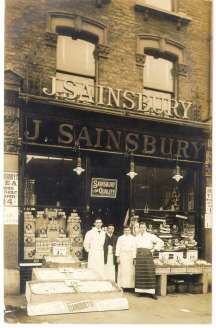|
Eggs |
||
Huge wooden crates of eggs also arrived from Poland, Russia and even China. John Benjamin recalled:
Foreign eggs were sometimes very small, very cheap or even bad, which made checking the eggs particularly important. This was done by holding each egg in front of a candle to see inside, a process known as 'candling.' Small wicker baskets were provided so that customers could select their own eggs if they wished. Eggs could be bought singly, as well as by the dozen or half dozen, and mental arithmetic such as 'seven eggs at three-farthings each' was a useful test of an egg boy's head for figures. There was a special counting system which was used when ordering or checking the contents of a crate:
For more information on shopkeepers'
counting systems, go to the Reference Library. Go back to inside the store. Copyright J Sainsbury plc, 2000. |
